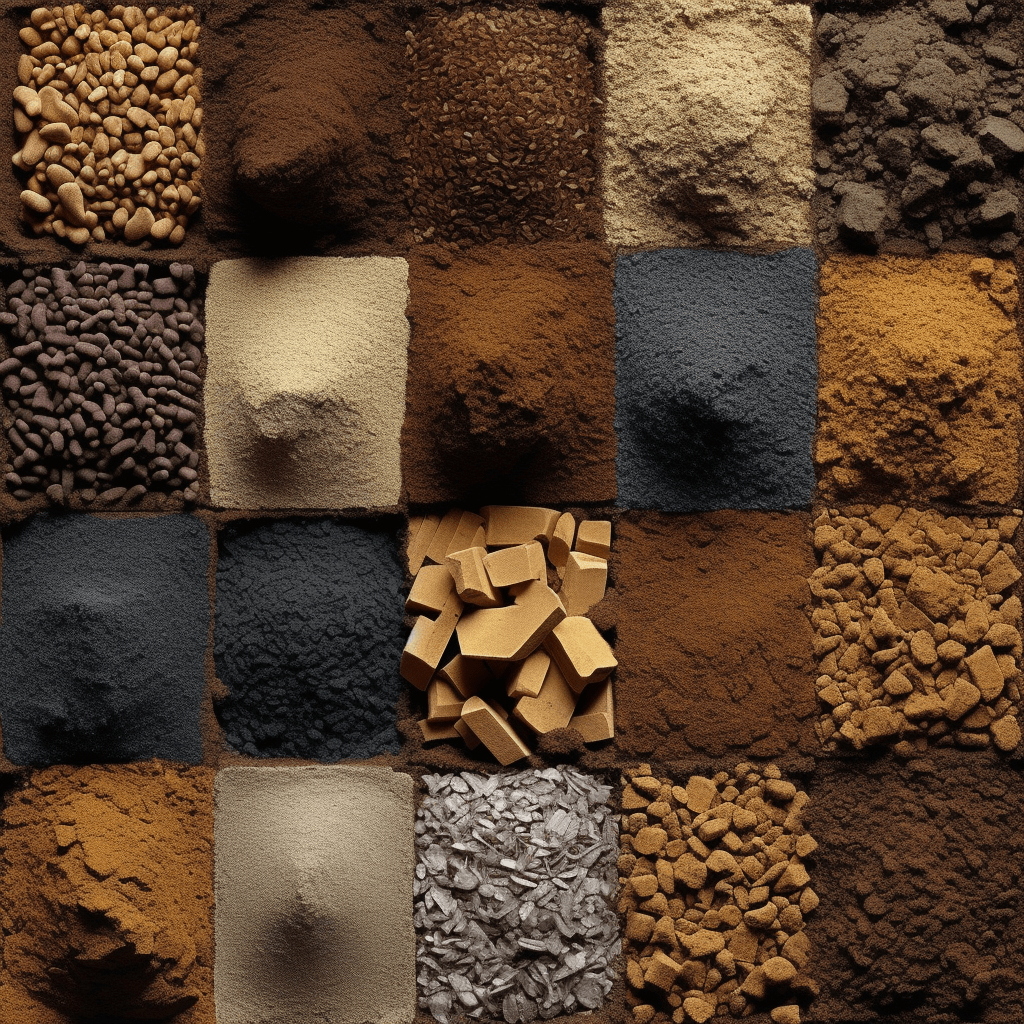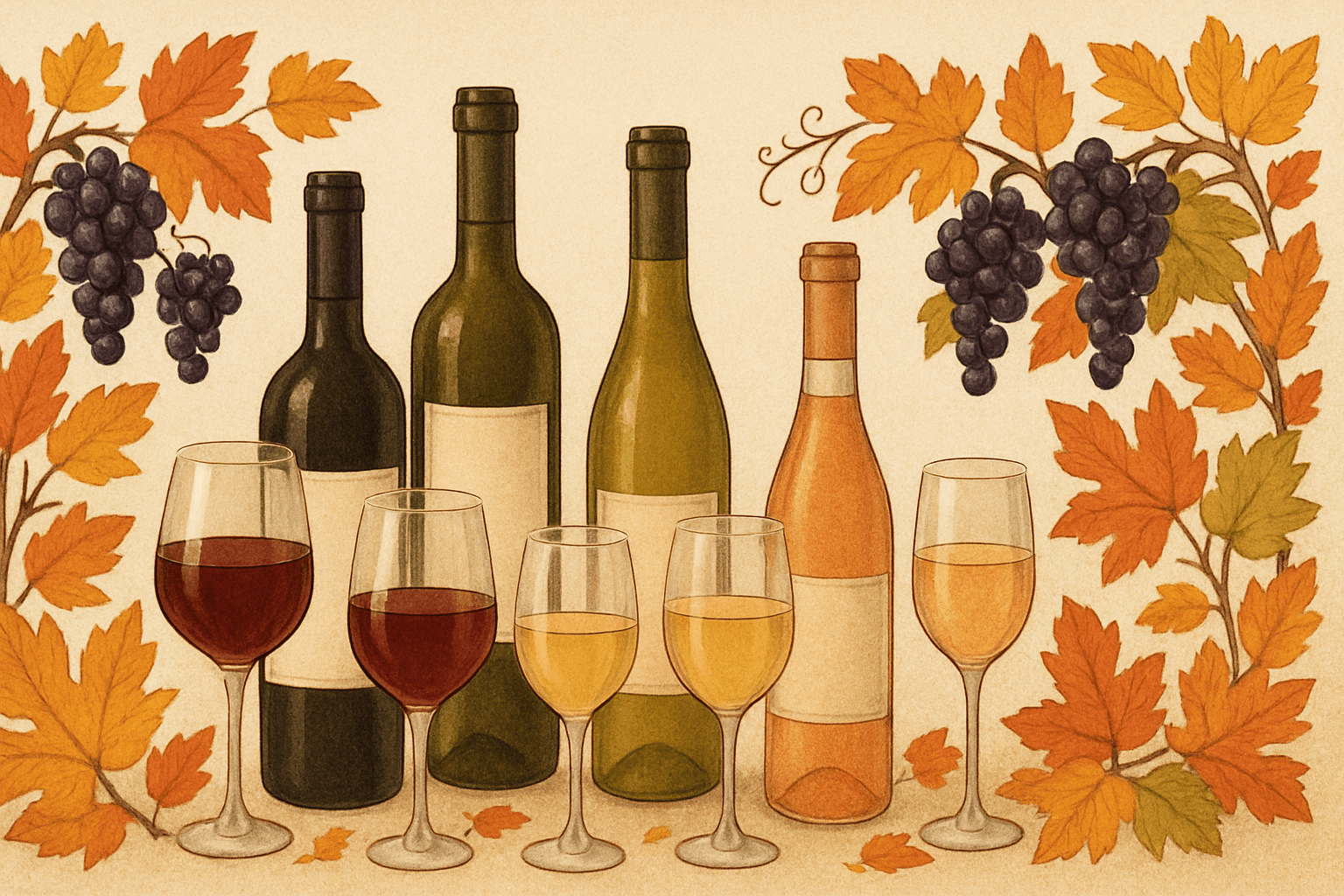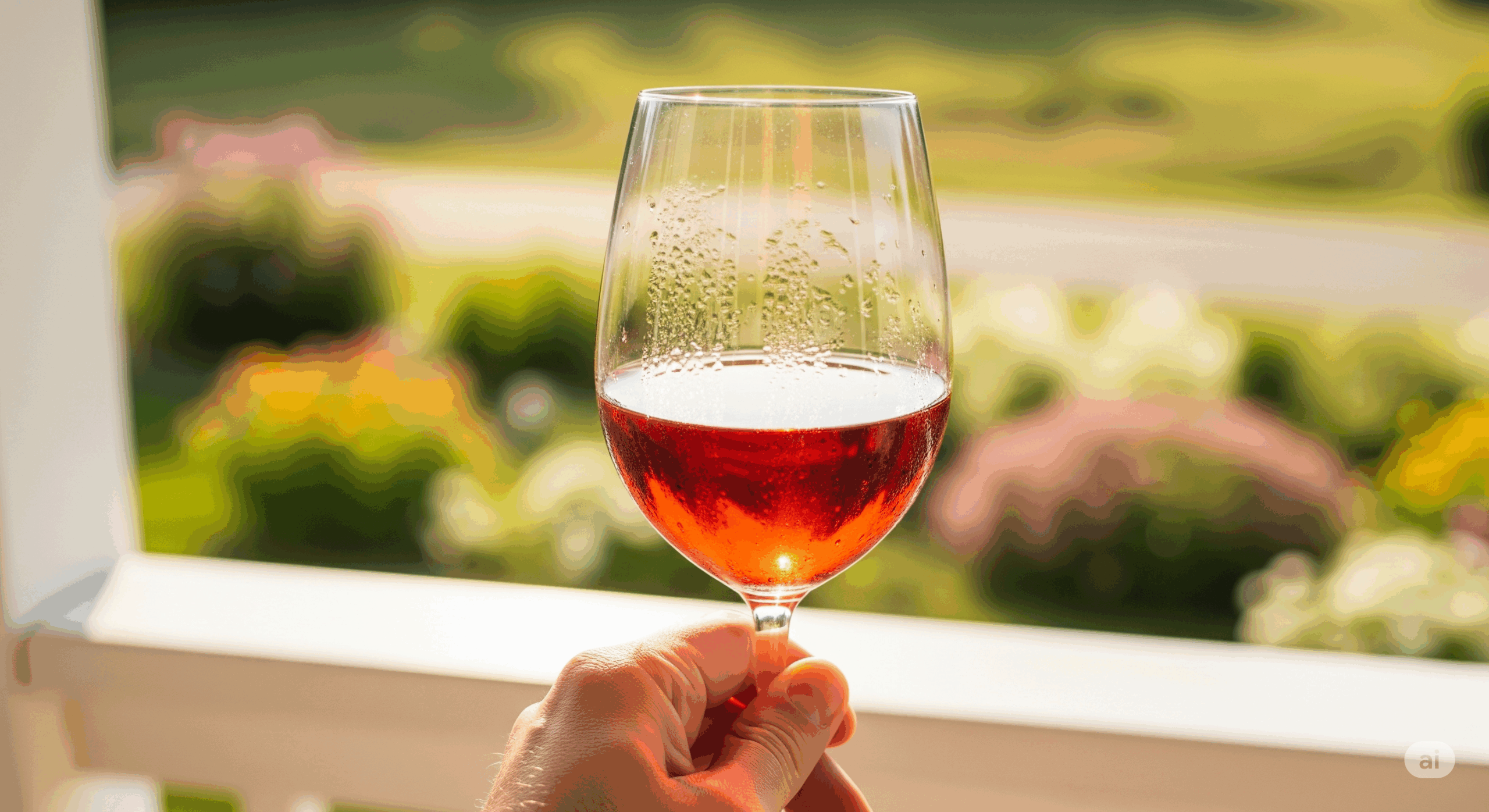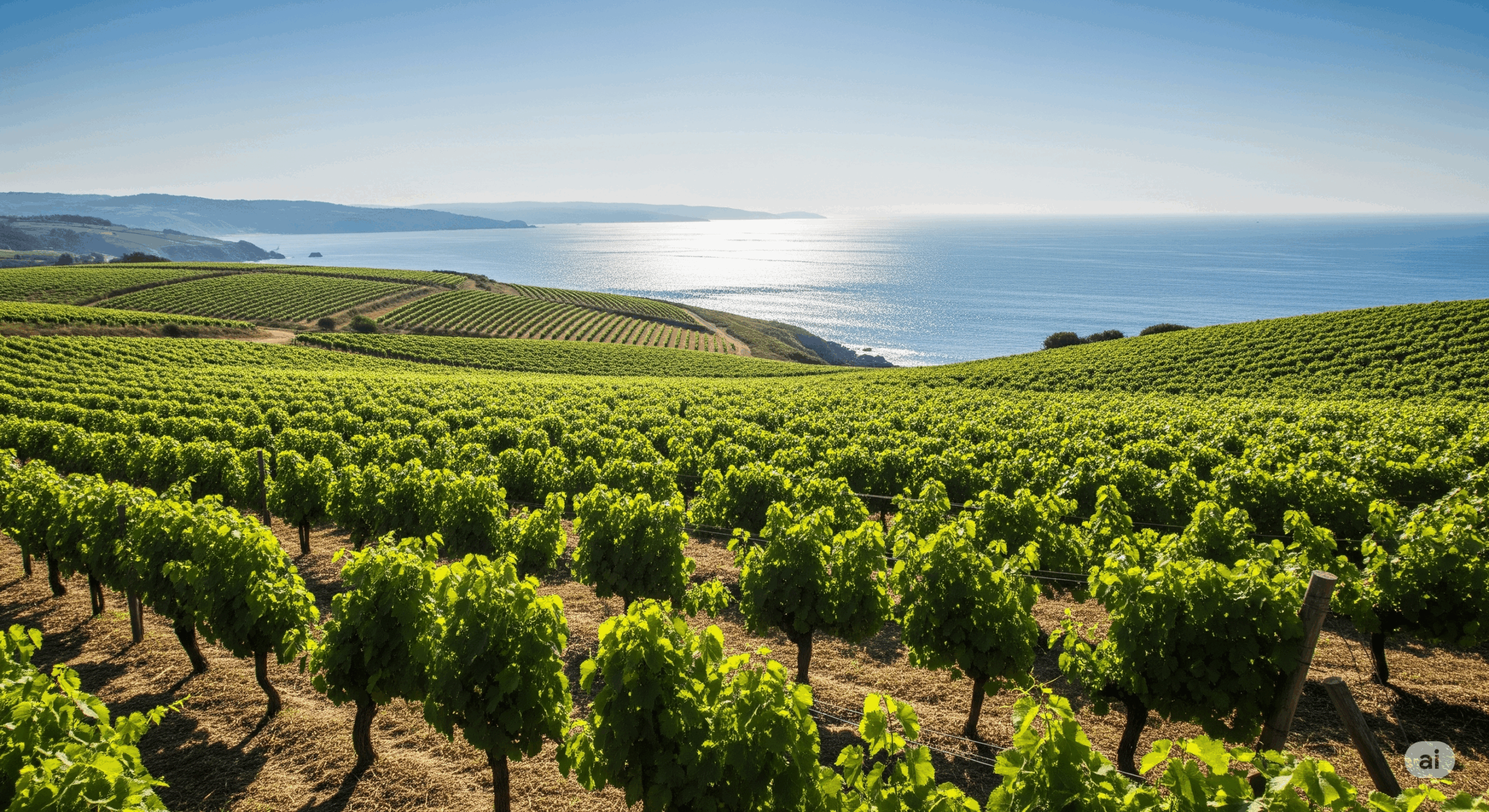Wine enthusiasts have long appreciated the significance of terroir in crafting a memorable bottle of wine. Terroir refers to the unique combination of climate, geography, and soil that contribute to the distinct characteristics of a wine. While each play their part, it is soil that literally nourishes the grapes. Today we will explore the lesser-known intricacies of vineyard soil and how these underfoot influences mold the taste, smell, and color of your favorite wines. For each soil type, we’ll recommend a wine (or two!) that showcases these traits and allow you to savor the impact of soil first-hand.
Alluvial
Alluvial soil, a nutrient-rich blend of silt, clay, sand, and gravel deposited by rivers and streams, is found in wine regions such as New Zealand’s Marlborough, Argentina’s Mendoza, and Napa Valley in California. This soil type produces diverse wines with a range of textures, flavors, and aromas, as the composition of alluvial soil can vary greatly from place to place. Grape varieties like Sauvignon Blanc, Malbec, and Cabernet Sauvignon thrive in this setting. We recommend trying the 2021 Cloudy Bay Sauvignon Blanc, a crisp, refreshing, and aromatic wine exuding the best qualities of Marlborough’s Alluvial terroir.
Chalk
Chalk soil, made predominantly of calcium carbonate, is prevalent in regions such as the Champagne and Chablis areas of France and the chalk cliffs of England’s Sussex coast. This soil type allows for excellent drainage and imparts a lively, fresh, and mineral-driven character to wines. Grapes such as Chardonnay, Pinot Noir, and Pinot Meunier are renowned for thriving in chalky terrain. To experience a wine that embodies this essence, try the 2012 Taittinger Comtes de Champagne Blanc de Blancs, a high-quality Champagne made from 100% Chardonnay grapes that exhibit a fine balance of elegance and minerality. If that’s too pricey for you (which it is for most!), substitute NV Pierre Gimonnet & Fils Cuis 1er Cru Brut Blanc de Blancs. This is a reliable grower champagne that often delivers outstanding quality for its price. It still comes from the Côte des Blancs region and is made entirely from Chardonnay, like the Taittinger Comtes de Champagne. While it might not have the same depth and complexity, it will offer a crisp, fresh palate with notes of green apple, citrus, and a touch of brioche.
Clay
Clay soil dominates regions such as Pomerol, Bordeaux, and parts of California’s Napa Valley. Known for retaining water and nutrients, the grapes grown in clay soil produce full-bodied wines with strong tannins and a deep, luscious color. Merlot, Cabernet Sauvignon, and Syrah varietals flourish here. To experience the fullness of clay, savor a glass of the 2019 Merus Napa Valley Cabernet Sauvignon, famed for its robust taste and velvety finish. If the price tag is out of reach, grab a bottle of the 2019 Château de Pez from Saint-Estèphe, France. Located in the Left Bank of Bordeaux, Château de Pez’s vineyards have a high clay content, resulting in a Cabernet Sauvignon-based wine with structure and dark fruit characteristics. While Bordeaux wines can still be quite pricey in the US, this particular producer offers a reasonable price for the region.
Goldridge
Goldridge soil, a unique and well-draining sandy loam formed from the remains of ancient volcanic ash and sediment, is found predominantly in California’s Sonoma County, particularly the renowned Russian River Valley. Known for its ability to produce harmonious wines with outstanding fruit character, Goldridge soil favors grape varieties like Pinot Noir and Chardonnay. To discover the magic of Goldridge, savor a glass of the 2018 Kosta Browne Russian River Valley Pinot Noir, a lush, well-balanced, and fruit-forward gem that exemplifies this celebrated terroir. If that hits the pocketbook too hard, look to the 2018 Davis Bynum Jane’s Vineyard Pinot Noir, also in Russian River Valley. This wine is made from grapes grown in a vineyard with Goldridge soil. It features bright red fruit, balanced acidity, and a hint of earthiness, making it reminiscent of the Kosta Browne.
Granite
Granite-based soils are found in regions like the Northern Rhône Valley in France, Rías Baixas in Spain, and parts of South Africa. Wines produced in this soil tend to be mineral-driven, with pronounced acidity and vibrant fruit flavors. Notable grape varieties cultivated in granite soil include Syrah, Grenache, and Albariño. To explore the wonders of granite, we recommend the 2019 Saint Cosme Côte-Rôtie, a phenomenal, complex Northern Rhône Syrah that impeccably captures the essence of a granite terroir.
Gravel
Gravel soils are prevalent in regions like the Médoc appellation of Bordeaux and Hawke’s Bay in New Zealand. Characterized by its excellent drainage and heat retention, gravel soil promotes the concentration of flavors and tannins in wines, resulting in full-bodied, powerful, and structured expressions. The gravely terrain favors grape varieties such as Cabernet Sauvignon and Merlot. To truly capture the elegance and depth of gravel soil, sample the 2016 Château Pontet-Canet Pauillac, an outstanding Bordeaux blend that reflects the intricacies of its home terroir. If that 100 pointer is out of reach, pick up a bottle of the 2016 Château Greysac from Médoc. While not from Pauillac, this Médoc wine is also from the Left Bank of Bordeaux where the gravel soil contributes to the wine’s structure. The wine offers a blackcurrant and cedar profile, with a noticeable gravelly minerality and firm tannins.
Limestone
Characterized by its high calcium content, limestone soil is commonly found in the Burgundy region of France and is renowned for its role in the production of both red and white wines, such as Pinot Noir and Chardonnay. The wines from this soil type have high acidity, bright fruit flavors, and a rich, creamy texture. Our recommended limestone-influenced wine is the 2020 Domaine Francois Lumpp Givry Les Petites Vignes Blanc, a lush and crisp white Burgundy made from Chardonnay grapes.
Loam
Loam soil – a fertile mix of sand, silt, and clay – is widespread across various wine regions, including Mendoza in Argentina and certain areas of California. Thanks to its excellent water retention capabilities, loam soil produces well-rounded, balanced wines with moderate acidity and supple tannins. Malbec and Cabernet Sauvignon enjoy success in loamy environments. Here we recommend immersing your palate in the 2019 Catena Zapata ‘Nicasia Vineyard’ Malbec, a luscious, full-bodied Argentinian red that shines with the backdrop of its terroir. You can also find a slightly more affordable option in the 2019 Alamos Malbec. Also from the Mendoza region, this Malbec delivers good value. While not as complex as the Catena Zapata, it still features dark fruit flavors, notes of vanilla and a touch of earthy minerality that’s characteristic of the region’s loamy soils.
Sandy
Sandy soil is found in wine regions like Rías Baixas in Spain and parts of Australia’s McLaren Vale. The well-drained properties of sandy soil lead to the production of lighter, more elegant wines with vibrant fruit flavors and a lower alcohol content. Grenache, Tempranillo, and even Zinfandel wines excel in sandy environments. Here we suggest sampling the 2020 Adegas Gran Vinum ‘Esencia Divina’ Albariño, a delightfully fresh and vivacious white wine hailing from Rías Baixas.
Schist
Schist soil, characterized by its layered, metamorphic rock composition, is prominent in regions like Portugal’s Douro Valley, South Africa’s Swartland, and parts of France’s Roussillon. Wines crafted from schist soils exhibit high minerality, intense fruit, and firm structure, thanks in part to the heat retention and excellent drainage provided by the soil. Notable grape varieties prospering in schist terrain include Touriga Nacional, Grenache, and Carignan. To immerse yourself in the schist experience, try the 2016 Quinta do Crasto Douro Reserva Vinhas Velhas, an exceptional Portuguese red wine that reflects the Douro Valley’s distinctive terroir.
Slate
Slate soil is most famously present in the steep hillsides of Germany’s Mosel wine region, but can also be found in regions like Priorat in Spain. The heat retention and drainage properties of slate-rich soils significantly impact the final product, giving wines a pronounced mineral character and a razor-sharp acidity. Riesling and Garnacha are celebrated grape varieties that flourish in these soils. For a foray into the world of slate-infused wine, try the renowned 2020 Dr. Loosen Urziger Wurzgarten Riesling Kabinett, a beautifully balanced and zesty example of what can be achieved in slate-rich terrain.
Volcanic
Volcanic soils, with origins in lava flows and ash deposits, are prevalent in regions like Etna in Sicily, parts of Oregon’s Willamette Valley, and even the Canary Islands. These soils yield wines with a diverse and complex flavor profile, including smoky mineral notes, bright acidity, and firm tannins. Pinot Noir, Nerello Mascalese, and Malvasia grapes all thrive in this unique soil. To indulge in a wine with volcanic nuances, we recommend the 2019 Tenuta delle Terre Nere Etna Rosso. This wine is a blend of indigenous Sicilian grapes, predominantly Nerello Mascalese. It offers a beautiful expression of Etna’s volcanic terroir, with bright red fruit, floral notes, a distinct minerality, and well-integrated tannins. Despite being a highly reputable producer, Terre Nere’s entry-level Etna Rosso offers good value.
Well there you have it, a crash course and newfound understanding of how soil affects your vino. Have we blown your mind? Now it’s time to embark on a tasting journey to experience the impact firsthand. Grab a few of the recommendations and let your palate loose. Happy Hunting!
Did you like this content? If you did, let us know and share it with your friends.
This page contains affiliate links. We receive a small compensation when you purchase through affiliate links. While clicking these links won’t cost you a cent, it will help us keep the lights on and buy more wine. To find out more, click here.






